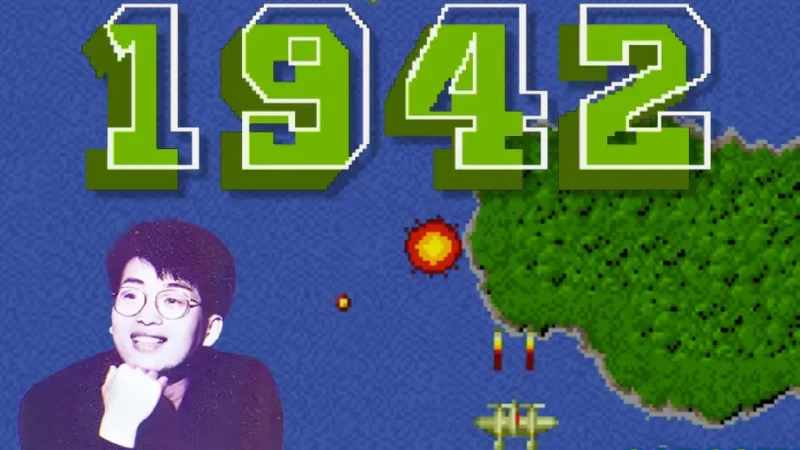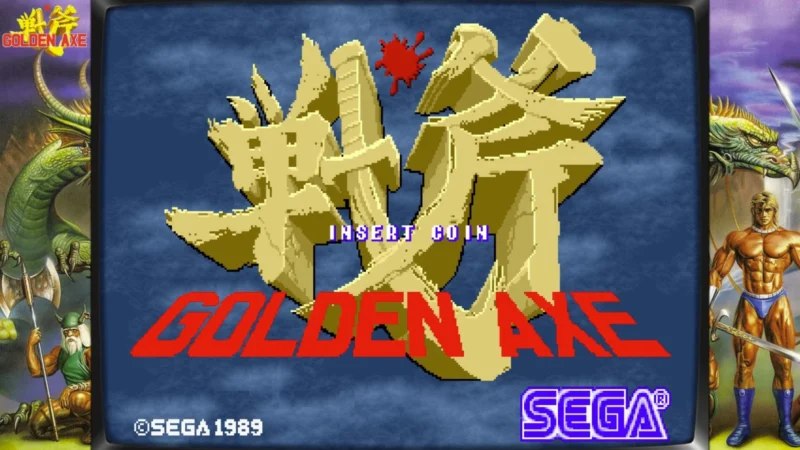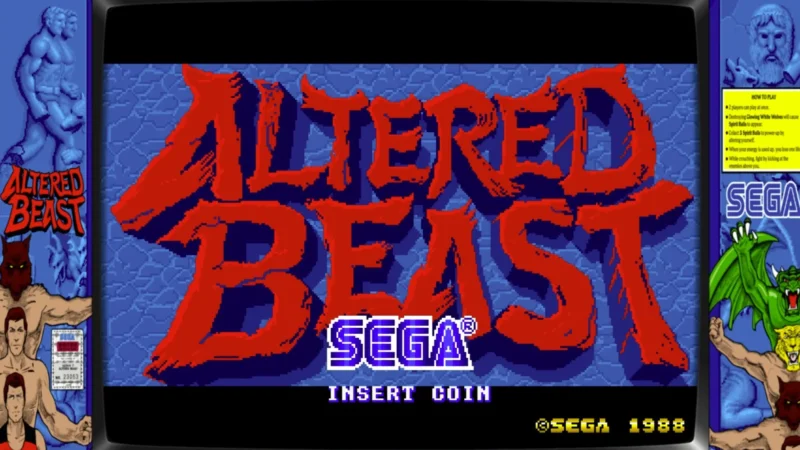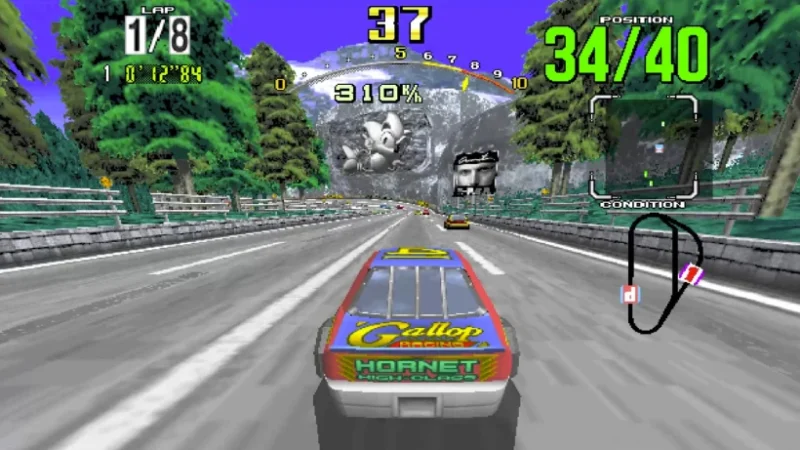Hocus Pocus: History & Development of a DOS Game Classic
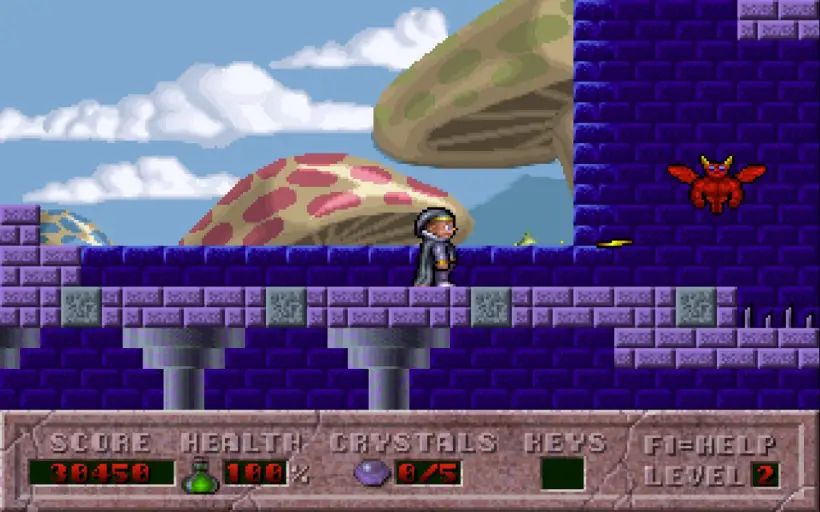
There was a time where games were freely distributed to users via floppy disks or downloads. Whether you got a disk by mailing in to the publisher, getting it handed to you at a game store, or bundled with another game, shareware was everywhere in the mid-90’s. One such game that landed in our computer room was the shareware version of Hocus Pocus. This mostly forgotten classic was one game that both my sister and I loved equally – actually, she may have loved it even more than me. We liked it so much, we sent our money into the publisher and were mailed the full version after playing through the shareware version.
Here’s the story behind Hocus Pocus, and how one man burned bright in the gaming industry before leaving it entirely.
Mike Voss
In 1991, Mike Voss wasn’t looking to make a career out of developing video games, but he liked the idea of shareware games that people could play a demo of and, if they liked it, buy the full version by at a video game store or mailing a check to the publisher directly. It helped that he read an article that described one publisher getting 300 orders directly to them each day. That publisher was Apogee.
Apogee, a King of Shareware
In the mid-90’s, Apogee Software was in the business of cranking out games and using the shareware distribution method to get the word out. Whether it was through a download in the pre World Wide Web era of the Internet, or a floppy disk that came with another game, shareware was already tried-and-true by Apogee, with massive hits under their belts including Commander Keen, Wolfenstein 3D, and a little franchise called Duke Nukem (which up to that point was a 2D side-scroller).
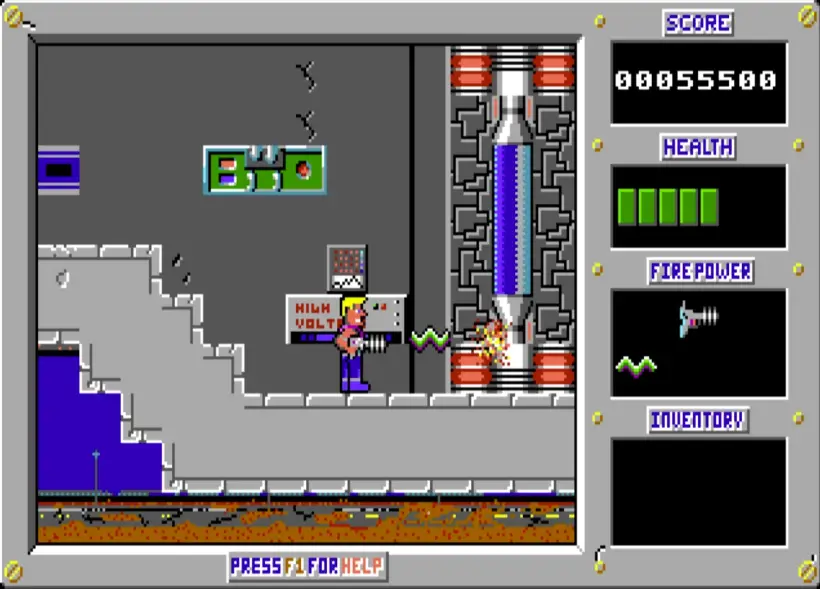
Voss & Apogee
Knowing that some publishers like Apogee were out there selling hundreds of games each day, Voss decided to devote more time to programming a game of his own. After trying some different ideas of his own, including a cribbage simulator, he grabbed himself one of the more successful Apogee titles and became inspired. That title was Duke Nukem.
Going from the similar script of Duke Nukem, Voss created Clyde’s Adventure, simple sidescroller where the protagonist, Clyde, uses his wand to create magic and solve puzzles through maze-like castles. Under the name of his company, Moonlight Software, he threw Clyde’s Adventure out to the world as shareware and soon he was making some money from it. “I could almost make a small and very modest living. Very very modest,” Voss would later say after releasing Clyde’s Adventure in 1992.1
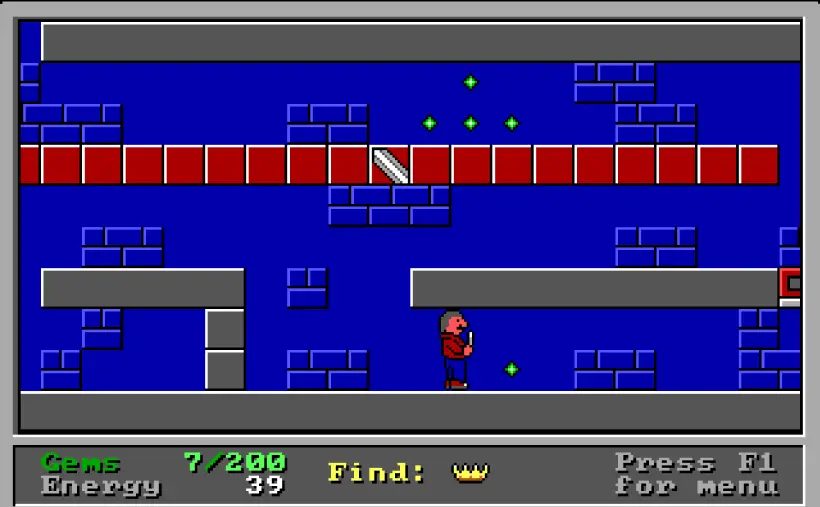
While the game’s success was modest, it did catch the attention of Apogee’s founder, Scott Miller. Miller wrote to Voss asking if Apogee could publish Voss’ next game.
In his first try at creating a shareware game, Voss had landed one of the best shareware publishers to distribute his next one. Not bad for a guy who was just trying out the video game thing to see if it worked.
Development of Hocus Pocus
A major selling point that brought developers to Apogee was their policy to allow the developer of the game to keep the rights to it and paid the developers royalties based on sales. If a game did well, the developer would do equally as well. This approach appealed to Voss, and he signed on to make his next project.
Keeping with the theme that made Clyde’s Adventure modestly popular, Voss wanted to explore the realm of magic a bit more in his next title. Instead of having a magic wand that had to tap on things to work, this time around it would shoot projectiles at enemies, more in line with a Duke Nukem-style game.
The game would center around a young wizard named Hocus. Like other sidescrolling titles at the time, most of the gameplay would involve finding your way out of the maze-like level by defeating enemies while finding objects, such as gems, keys, and magic crystals. The maze concepts Voss utilized in Clyde’s Adventure would play a big part in the gameplay for Hocus Pocus. Voss also kept the controls for the new game exactly the same as his previous outing.
Upping the Graphics
Voss kept a lot of the look and feel of the new game similar to Clyde’s Adventure at first. The basic sprites weren’t much to look at, in part because Voss was developing the game on a 6″ black and white monitor when is color monitor died halfway through development.1
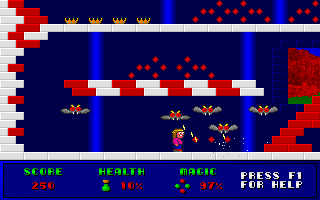
Luckily, Apogee had a few aces up their sleeves. One of their other developers, Cygnus Studios (which is credited in the game as Cygnus Multimedia Productions), was known for their stellar graphics. Cygnus Studios was wrapping up their own Apogee release and lent a hand with some revised graphics for Hocus Pocus.
The team at Cygnus Studios revised nearly all of Voss’ graphics, polishing the game into one of the best looking titles of 1994. Taking in both the early cut and finished game, the difference is striking.
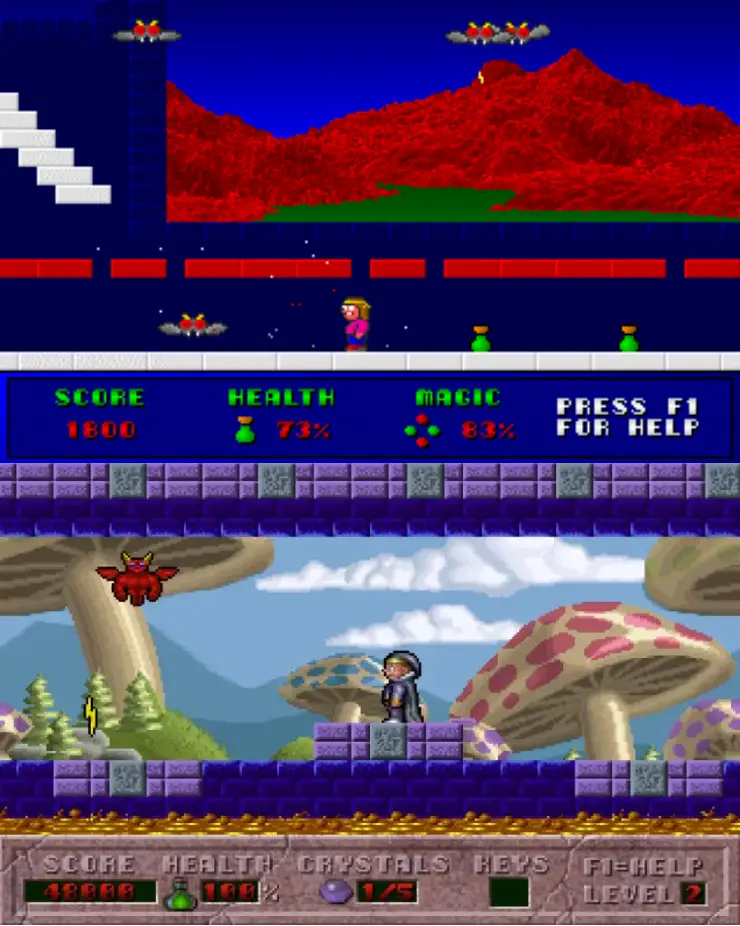
Adding Great Music
Apogee also brought in an expert team of sound engineers, including Rob Wallace, who composed the score for the game, and Jim Dose, who was in charge of the sound system for Hocus Pocus. This too was an enormous upgrade compared to the sound and music in Clyde’s Adventure.
Another interesting tidbit about the development of Hocus Pocus is that the cheat codes for the game were literally printed in the manual.2
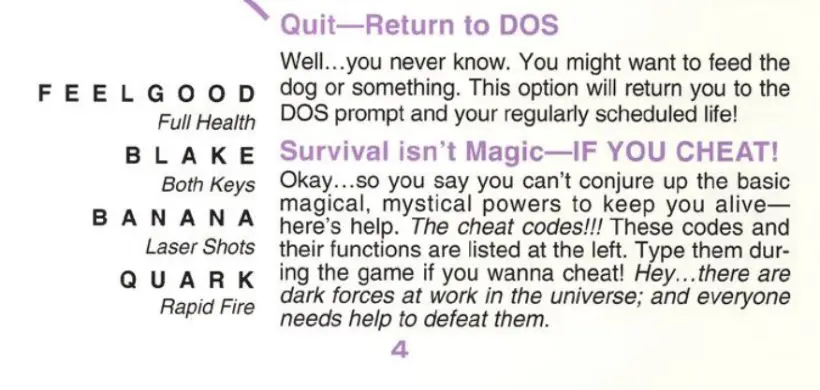
Hocus Pocus Release and Reception
A kid-friendly, spiritual sequel to the early Duke Nukem franchise, Hocus Pocus released on June 1, 1994. Sales were disappointing because Hocus Pocus released in the shadow of a shadow. Just two months before the release of Hocus Pocus, Cygnus Studios and Apogee released their magnum opus, Raptor: Call of the Shadows.
Voss would later say, “Hocus Pocus was released immediately following the release of Raptor [Call of the Shadows]. I saw full page ads in gaming magazines for Raptor [Call of the Shadows]. I saw no advertising for Hocus Pocus. At the time I felt cheated.”1
Voss wasn’t the only one who felt like Hocus Pocus wasn’t given the love it deserved. Joe Siegler, former Apogee community and website manager (as well as voice of Duke Nukem in Duke Nukem II) said of Hocus Pocus, “I always liked the game and wished it got more attention.”3
Indeed, Apogee pumped most of their marketing dollars into the highly successful Raptor, which sold between 80,000 to 90,000 copies.4 Hocus Pocus became a bargain bin game.
Mike Voss’ Send Off
After creating Hocus Pocus and working on Clyde’s Revenge, a sequel to Clyde’s Adventure, Mike Voss left the gaming world entirely. He turned his love of programming into website development in the 2000’s and then talked of leaving the industry for good after that. I was unable to find any further information about Mike Voss or where he ended up. But wherever he is, we all thank him for creating a cute little game that some of us never forgot.
References:


